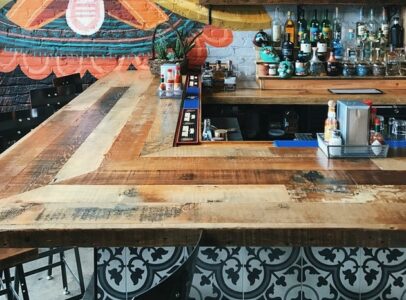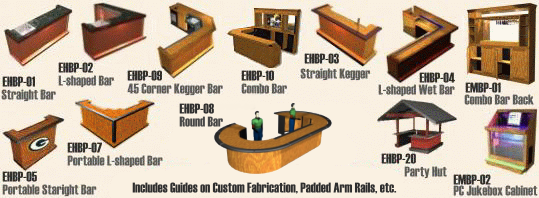A home bar is an exciting concept and a great addition to any home, but many people don’t know where to start and need help with ideas and designs. The type of bar you build is a personal choice and will be governed by how much space you have and the size of your budget.
The very first thing to consider before you even put pen to paper and sketch your first simple design is where your bar is going. Your bar location is the first step, once you know where it is going, then you can think about the type of bar that will fit the space.
Now you can think about home bar shapes, will it be simple and straight, or will it be a more complex design sweeping and curved. This comes down to personal choice and space available and the latter may take priority if space is tight. Obviously you can build any kind of elaborate shaped bar you can come up with, but here we look at the basics.
The Straight Bar

It is what it says it is, a straight bar, no curves, no angles, just a straight bar. Don’t be fooled by this simple straight forward design, it’s the classic bar.
It may be simple in design, but it is practical, versatile and can be used in many ways to fit into many spaces.
The most space-saving way to use the straight bar is to actually put it against the wall and use it as a sideboard type bar. You won’t be able to go behind the bar, but you can still serve drinks from it right at the front. Using it this way will save the most space.
The classic way to install the straight bar is to put it in front of a wall with a space between the bar and the wall so you can get behind the bar to serve. It is best to leave around 30 to 36 inches between the bar and wall to give you enough room to work.
A straight bar can fit into a corner too, one end of the bar goes against one wall, while the bar itself runs along the adjacent wall. This means you can only get behind the bar from the open end and again leave the right amount of space behind the bar for serving.
You could also fit the bar into a corner at an angle, running diagonal to the corner, giving a triangle space behind the bar. This will take up more room than fitting the bar at right angles in the corner as previously stated.
A straight bar can be short or long depending on the space available, but it is a versatile bar design, that will fit most spaces.
L Shaped Bar
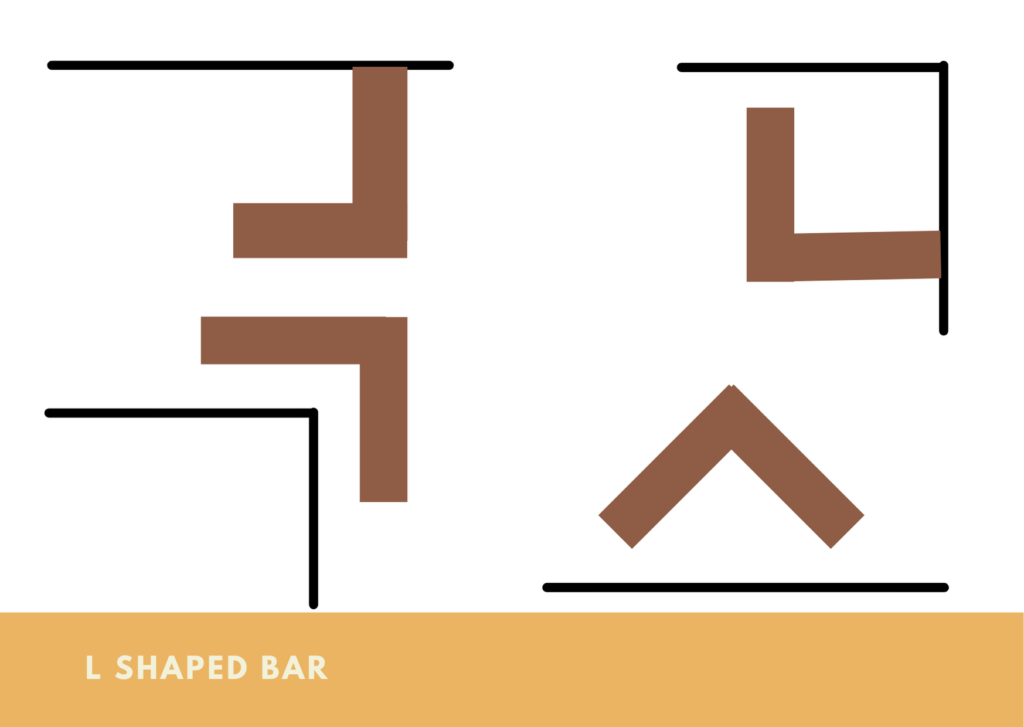
Another classic and popular bar design that is what it says it is on the tin, is an L shape, normally with equal bar lengths on both sides.
They can work on a straight wall having one end of the bar against a wall which can be either length, the bar then creates a square semi enclosed bar.
It works well in a corner too, and is probably the most common set up to fill an internal corner. One end of the bar will go against the wall and then leave a gap between the other wall and the other end for access behind the bar. This creates a rectangular space behind the bar.
It equally works on an external corner, the bar sits in front of the corner with enough space to get behind the bar. The bar follows the wall around each corner.
The bar can also be placed on a straight wall at an angle so both bar ends are close to the wall, creating a triangular space behind the bar.
An L shaped bar is popular probably because it adds a second dimension to your home bar.
A 45 Degree Bar
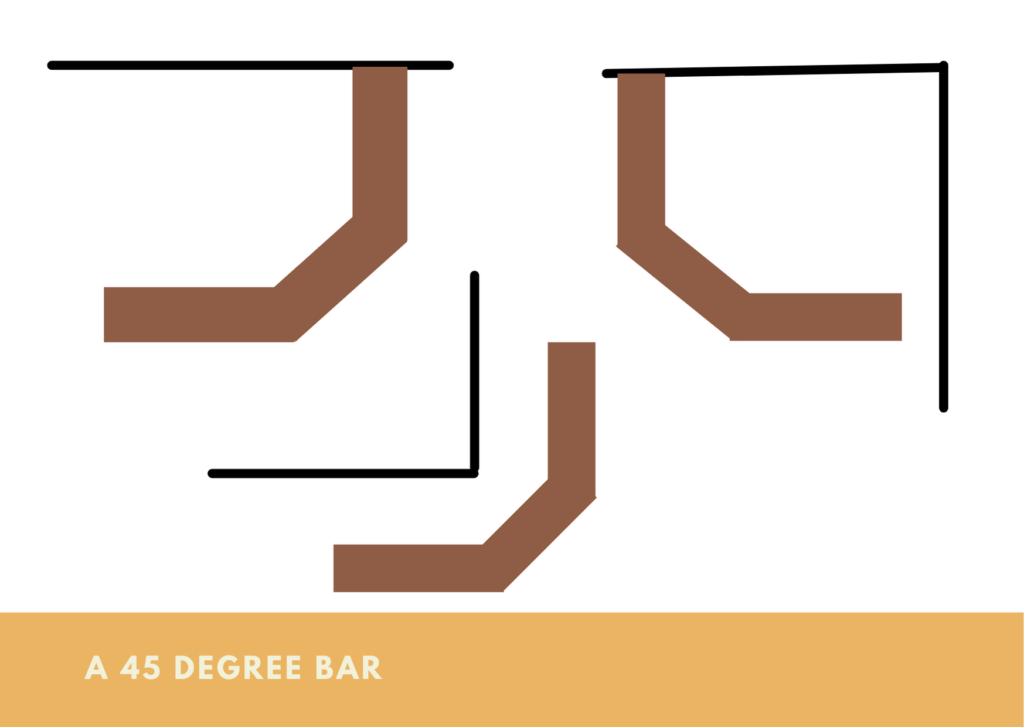
This shaped bar is a little more unusual and does require more space as there are three sides to this design. Think of it as pulling the L shaped bar apart so you have to straight bars and then fitting a third section between the two ends at an angle and you have the 45 degree bar design.
Like the L shaped bar this too can work on a straight wall, but will take up a lot of room.
The best set up for this design is to fit it into an internal corner where it will give a nice space behind the bar because of the added angle from the third section.
It can also fit around an external corner, but will project more than the L shaped bar because of the middle angled section, which will equally give more space behind the bar.
A 45 degree bar is more of a dressed up L shaped bar that will normally require more space, but looks a little more interesting with its extra angled section between the two straights.
The Semi Circle Bar
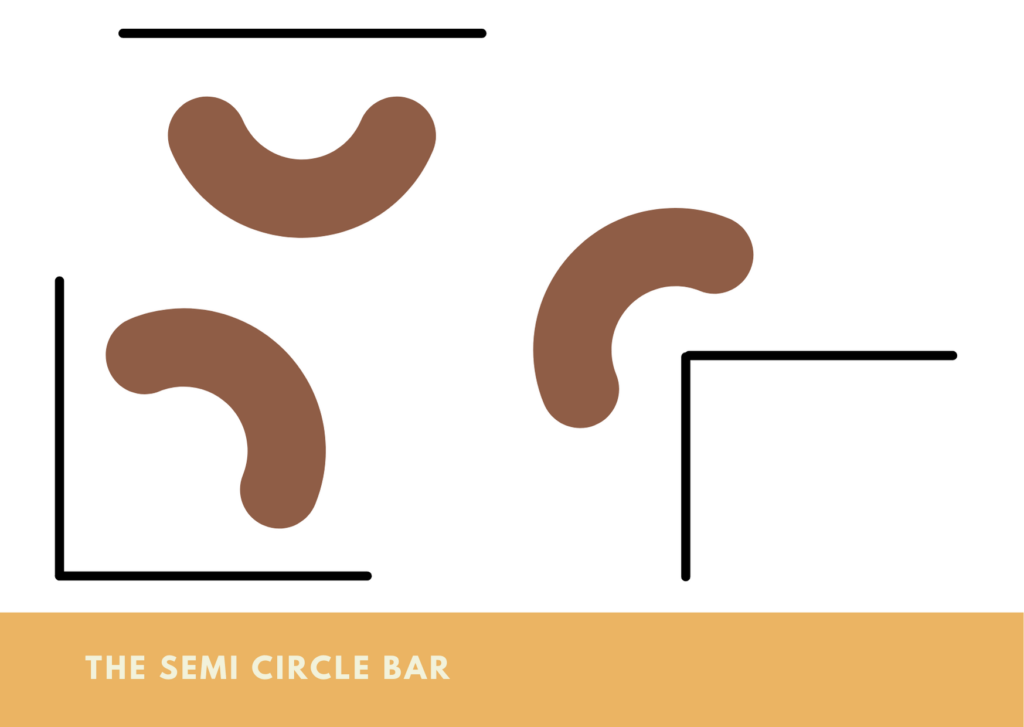
This design as it suggests is a half circle, but can also be half an oval making it an elongated semi circle. They work best on a straight wall leaving a space between the wall and the bar ends for access.
They can go in a corner, but will need more space than the other design already covered, they will even go on an external corner, but again will need more space.
If you have a curved external corner, which some properties do, then the semi circle or semi oval may well be the design to go for and would look great as long as the bar curve matches the wall curve.
This design is aesthetically pleasing with the curves rather than square angles, and works best on a straight wall.
The Round Bar
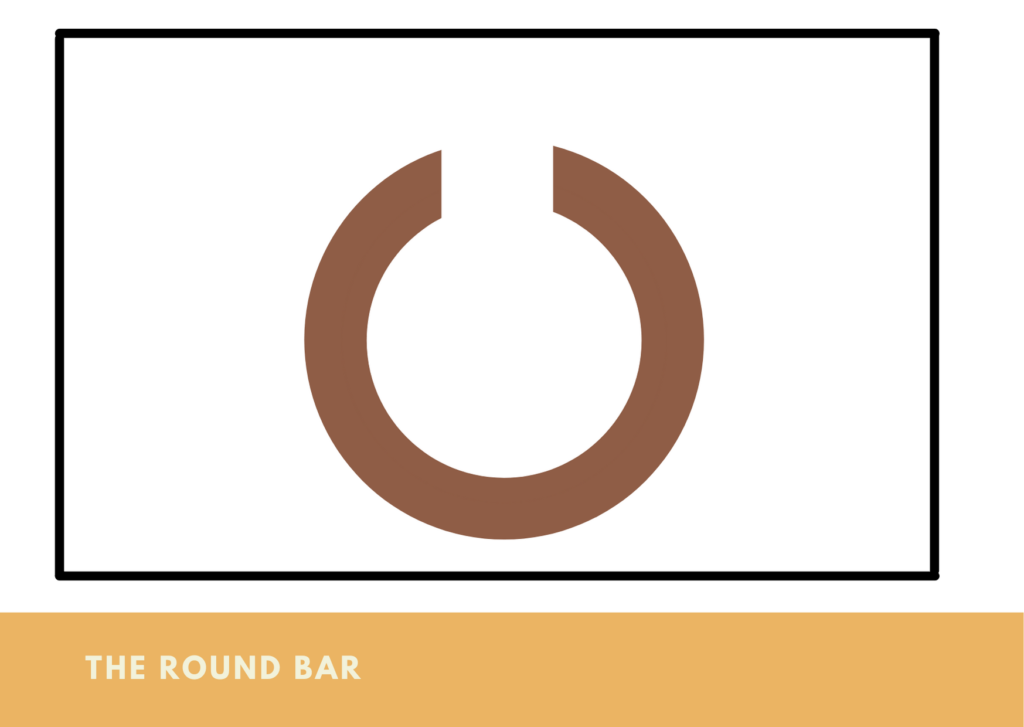
The round bar is a little more complicated to build, but is certainly doable when you get the right plans to build it. The round design doesn’t have to be a perfect circle, you can have it as an oval shape instead, it will depend on where it is going to be sited.
I think the only placed to site this design is in the middle of a room because it will not look its best coming off a wall, or pushed into a corner.
You have a round bar with an opening for access behind the bar, where do you put that opening if you are trying to fit it into a corner. It won’t look right on an external corner either, or straight wall.
This design needs space, it needs its own room where it can take center stage and accommodate service around its whole parameter.
The round bar looks great if you have the space to accommodate one.
The Basic Bar Shapes
You can go wild with your bar designs and create any shape you like, different angles, a multitude of curves, but they all kind of stem from these basic shapes.
A straight bar being the most basic of all, but probably the most versatile too. Build or buy two or more straight bars and arrange them to suit you space, connecting them in a line or adjacent to each other to create an angled bar.
You can use a straight bar with an L shaped bar too, to create different bar shapes. There are many combinations and shapes you can create, or just custom build your bar to suit the space it is going in.
Work out the location of you bar and then decide what shape you can fit into the space you have, then build your bar.
Share you thoughts below on home bar shapes in general and what shape your bar is and why?, Was it your choice or did it have to be a certain shape to fit its location?
Rob is a passionate home bar and pub shed enthusiast with a passion for craft beer. With hands-on experience in designing and building his own home bar, Rob shares his knowledge, tips, and inspiration to help fellow enthusiasts create their own perfect space. Alongside the world of home bars and pub sheds, Rob also explores the diverse and exciting realm of craft beer, providing honest reviews to help you discover your next favorite brew. Join Rob on a journey of flavor, design, and craftsmanship right here on Home Bar Kit.

